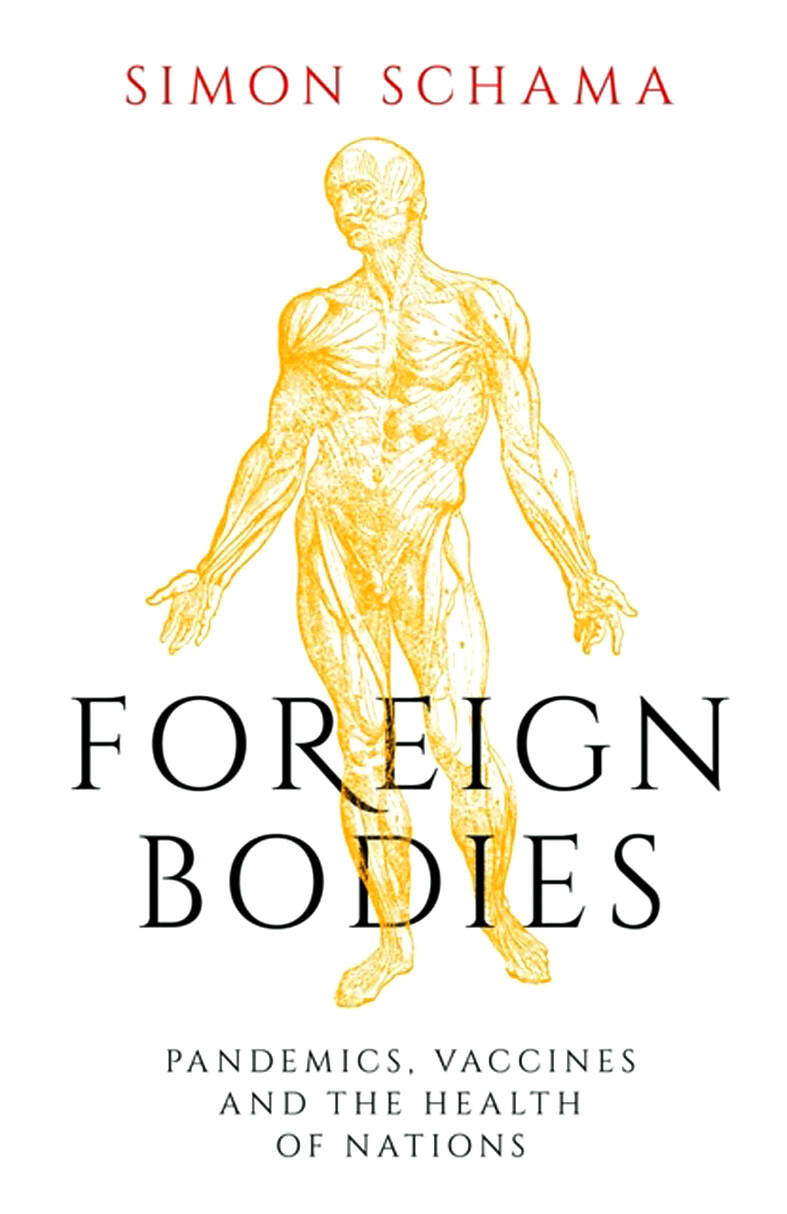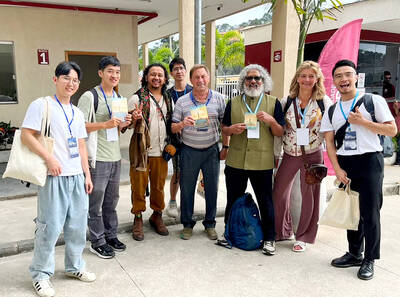Few events are as compelling as a pandemic, even a relatively mild one. Though nowhere near as severe as the 14th-century Black Death or the 1918 Spanish flu, COVID-19 has drawn responses from every sector of society, spreading panic and undermining trust in governments.
Little wonder then that throughout history politicians have sought to blame lethal new outbreaks of infectious disease on foreign “others,” hence the Victorian characterization of cholera as the “yellow peril” and Donald Trump’s references to the coronavirus as the “kung flu.”
Few groups are more aware of the consequences of these calumnies than Jews. In the 14th century, rumors that the Black Death was because of Jews poisoning the drinking wells of Christians sparked show trials and executions across southern Germany. Similarly, when in 1892 Jewish immigrants fleeing pogroms in eastern Europe arrived in Manhattan on ships riddled with typhus, it was they who were quarantined on an island in the East River, not the non-Jewish passengers in the first-class cabins.

FINDING A CURE
So, it is perhaps no surprise that Jews have been drawn to microbiology and the allied science of vaccinology. From August Paul von Wasserman, the German-Jewish bacteriologist who in 1906 discovered a test for syphilis, to Ludwik Fleck, who while imprisoned in Buchenwald developed a vaccine for typhus, to Jonas Salk and Albert Sabin, who contemporaneously developed the first polio vaccines, the history of microbiology is full of Jewish scientists whose careers stand as a rebuke to these pandemic prejudices.
To this pantheon of Jewish miracle workers Schama has brought his considerable literary talents to two more: Elie Metchnikoff, the Ukrainian-born scientist who pioneered the study of immunology, and his star pupil, Waldemar Haffkine.
Though he tried to disguise his Jewish identity, Haffkine was hounded by the tsarist authorities in Odesa on suspicion of organizing armed resistance to pogroms and was forced to flee to France, where he joined Metchnikoff at the Pasteur Institute in Paris. There, in 1892, Haffkine developed the first cholera vaccine, before moving to India where he pioneered a series of scientific trials that eventually saw millions of Indians immunized against cholera and plague.
Despite being starved of funds by the Indian Medical Service, Haffkine was hailed by such leading English lights of the new laboratory science as Joseph Lister, who, impressed that Haffkine had chosen to test the vaccine on himself first, described him as an honorable man and a “savior of humanity.”
According to Schama, this made Haffkine “a living rebuttal” of the notion that Jews were vectors of infectious disease — a libel that would assume its most pernicious form in the Nazi portrayals of Jews as disease-carrying parasites whose tentacles encircled the globe.
Nonetheless, when in 1902 19 Punjabi villagers died of tetanus poisoning after plague vaccination, Haffkine was fired amid rumors he was a Russian spy. Even though the contamination had occurred in the village not the production facility and Haffkine’s reputation was subsequently restored, his career as a scientist was effectively over.
Schama, an expert on Jewish, French and art history, is not the obvious or best qualified person to tell these stories. Nonetheless, he has done a superb job of distilling the secondary literature and I particularly enjoyed his introduction where, hunkered in his home in the Hudson valley during lockdown, he marvels as “flora rioted; flora trespassed” and imagines a new “mutuality between humans and animals.”
COVID-19
But if COVID has made us aware of the diversity and fragility of the natural world, the joke, Schama suggests, is on us. Like global heating, emerging infectious diseases are an indication of a world out of balance and a reminder, as Schama puts it, channelling Pliny, that ultimately “all history is natural history.”
At the start of the pandemic, I shared Schama’s hope that COVID would persuade nations to set aside their differences and unite for the common good. But as the inequitable global distribution of vaccines and the ongoing disputes over the supposed artificial origins of the coronavirus demonstrate, national interests, and the suspicion of foreign bodies, are as strong as ever.
But though Schama highlights these depressing geopolitical realities, his real theme is with “inoculators and vaccinators as targets of suspicion.” Hence, alongside Haffkine we get paeans to the early exponents of inoculation, the precursor to vaccination, whereby surgeons would take a small amount of pus from a lesion on a smallpox victim and introduce it under another person’s skin in an attempt to induce an immune response. These advocates of scientific reason included Voltaire, Marcel Proust’s father, Adrien, and Lady Wortley Montagu.
A one-time society beauty whose face bore the scars of her own battle with the dreaded pox, Wortley Montagu had witnessed the efficacy of inoculation during her travels in the Ottoman Empire, where she had marveled at the unblemished skin of women bathing in a hammam in Sofia. In 1721, in the midst of a virulent smallpox epidemic, she arranged for her three-year-old daughter, Mary, to be inoculated before witnesses despite the opposition of the Royal Society. Mary survived and when it emerged the practice had been known for some time to traditional Welsh and Scottish healers, the English medical establishment came round.
Schama’s passion for his subject sometimes get the better of him, as when he praises Haffkine for his “fine and foxy” looks. But his bigger point, that we are living through a new age of unreason, is well made.
The problem is vaccination is a rich vehicle for metaphors. This is hardly surprising given that vaccines work by introducing infective foreign matter into otherwise healthy bodies. To many, this procedure is counterintuitive. After all, how can a foreign body be good for you? That the wielders of this technology today are medical elites and other supposed agents of the deep state makes them ripe for demonization by conspiracy theorists and populist politicians.
Currently, the right’s leading hate figure is Anthony Fauci, the former director of the US National Institute of Allergy and Infectious Diseases. Though of Italian descent, Fauci has been bombarded with Nazi memes and antisemitic tropes and is currently under investigation by House Republicans, who compare him to a war criminal for promoting vaccines while supposedly covering up scientific concerns that the virus might have emerged from a lab in Wuhan, China.
On that question, the jury is still out. But if we should draw any lesson from COVID it is that pandemics tend to be natural events that occur with regularity throughout history. Rather than seeking to blame foreigners, we would do better to recognize that, epidemiologically speaking, the world is a single unit, one in which all our bodies and fates are intimately linked.

This month the government ordered a one-year block of Xiaohongshu (小紅書) or Rednote, a Chinese social media platform with more than 3 million users in Taiwan. The government pointed to widespread fraud activity on the platform, along with cybersecurity failures. Officials said that they had reached out to the company and asked it to change. However, they received no response. The pro-China parties, the Chinese Nationalist Party (KMT) and Taiwan People’s Party (TPP), immediately swung into action, denouncing the ban as an attack on free speech. This “free speech” claim was then echoed by the People’s Republic of China (PRC),

Exceptions to the rule are sometimes revealing. For a brief few years, there was an emerging ideological split between the Democratic Progressive Party (DPP) and Chinese Nationalist Party (KMT) that appeared to be pushing the DPP in a direction that would be considered more liberal, and the KMT more conservative. In the previous column, “The KMT-DPP’s bureaucrat-led developmental state” (Dec. 11, page 12), we examined how Taiwan’s democratic system developed, and how both the two main parties largely accepted a similar consensus on how Taiwan should be run domestically and did not split along the left-right lines more familiar in

Specialty sandwiches loaded with the contents of an entire charcuterie board, overflowing with sauces, creams and all manner of creative add-ons, is perhaps one of the biggest global food trends of this year. From London to New York, lines form down the block for mortadella, burrata, pistachio and more stuffed between slices of fresh sourdough, rye or focaccia. To try the trend in Taipei, Munchies Mafia is for sure the spot — could this be the best sandwich in town? Carlos from Spain and Sergio from Mexico opened this spot just seven months ago. The two met working in the

Many people in Taiwan first learned about universal basic income (UBI) — the idea that the government should provide regular, no-strings-attached payments to each citizen — in 2019. While seeking the Democratic nomination for the 2020 US presidential election, Andrew Yang, a politician of Taiwanese descent, said that, if elected, he’d institute a UBI of US$1,000 per month to “get the economic boot off of people’s throats, allowing them to lift their heads up, breathe, and get excited for the future.” His campaign petered out, but the concept of UBI hasn’t gone away. Throughout the industrialized world, there are fears that